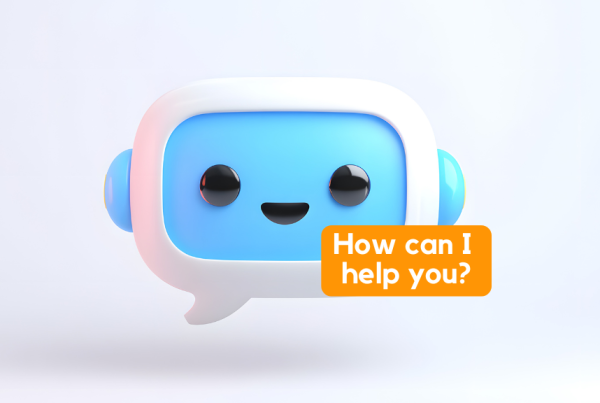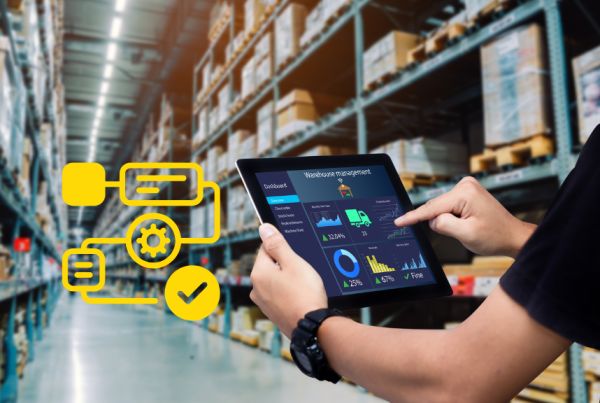Most businesses treat the purchase as the finish line. The customer clicked buy, the payment processed, and everyone celebrates. Marketing did its job. Sales closed the deal. Now it’s time to find the next customer.
This mentality is leaving massive amounts of money on the table. Acquiring a new customer costs five to seven times more than retaining an existing one. Yet businesses pour resources into acquisition while treating post-purchase experience as an afterthought. They obsess over getting people to click the buy button, then ignore them afterward.
The most profitable businesses understand a different truth: the purchase isn’t the end of the customer journey, it’s the beginning of the relationship. What happens after someone buys determines whether they become a one-time transaction or a loyal repeat customer who drives predictable, profitable growth.
The post-purchase experience is your secret weapon for building sustainable competitive advantage. While competitors chase new customers, you’re building relationships that generate recurring revenue, positive reviews, referrals, and higher lifetime value. Let’s explore the strategies that transform one-time buyers into repeat customers.
Why Post-Purchase Experience Matters More Than Ever
Customer acquisition costs are climbing across every industry. Digital advertising gets more expensive. Organic reach on social media shrinks. Competition intensifies. The economics of customer acquisition are fundamentally changing, making retention more valuable than ever.
Meanwhile, customer expectations have risen dramatically. Amazon trained consumers to expect seamless experiences, fast shipping, proactive communication, and effortless returns. Your customers now judge your post-purchase experience against these elevated standards, regardless of your company size.
The businesses winning today recognize that customer lifetime value matters more than first purchase value. A customer who buys once and disappears generates minimal profit after acquisition costs. A customer who buys repeatedly generates compounding returns with each subsequent purchase.
Post-purchase experience is also your most underutilized marketing channel. Happy customers become advocates who refer friends, leave positive reviews, and defend your brand on social media. These organic marketing efforts cost nothing and convert better than any paid advertising. But advocacy only happens when post-purchase experience exceeds expectations.
You can’t afford not to invest in post-purchase experience.
Strategy 1: Confirmation That Builds Excitement
The first touchpoint after purchase sets the tone for the entire relationship. Most businesses waste this opportunity with transactional confirmation emails that read like legal receipts—order number, items purchased, total amount, done.
Your confirmation should build excitement and reinforce the purchase decision. The customer just gave you money. They’re emotionally invested in having made a good choice. Your job is validating that decision while setting clear expectations.
Start with genuine appreciation. Thank them specifically for their business in a way that feels personal rather than automated. Acknowledge what they purchased by name rather than generic order details. Make them feel seen.
Set crystal-clear expectations about what happens next. When will it ship? When will it arrive? How will they track it? What should they do if there are issues? Uncertainty breeds anxiety, and anxiety breeds buyer’s remorse. Eliminate uncertainty with specificity.
Include next steps or preparation guidance if relevant. If they bought software, tell them to watch for their login credentials. If they bought equipment, mention what else they might need to get started. If they bought a service, explain the onboarding process. Help them visualize success.
Add value beyond the transaction. Include setup guides, usage tips, or complementary resources that help them get maximum value from their purchase. The goal is positioning yourself as a partner invested in their success, not just a vendor who collected payment.
Your confirmation email should leave customers more excited about their purchase than they were before opening it. That’s the standard.
Strategy 2: Proactive Communication Throughout Delivery
The gap between purchase and delivery is where relationships fracture. Customers wonder if their order is actually coming, whether it got lost, if they’ll receive it on time. Silence during this period creates anxiety that damages trust.
Proactive communication transforms waiting from anxiety into anticipation. Every status update is an opportunity to reinforce that you’re reliable, transparent, and care about their experience.
Send shipping notifications immediately when orders leave your facility, with tracking information and realistic delivery estimates. Don’t make customers hunt for this information—deliver it directly.
Provide delivery day reminders so customers can plan to receive packages rather than missing deliveries. A simple “Your order arrives today” message shows attention to detail and helps ensure successful delivery.
If delays occur, communicate immediately with honest explanations and updated timelines. Customers can handle delays when they’re informed. What they can’t handle is surprise delays discovered when checking tracking information themselves.
For complex products or services, send preparation communications before delivery. Help customers get ready to use what they purchased so the experience is smooth from the moment it arrives.
Every communication should reinforce your brand values and personality. Transactional updates can still be warm, helpful, and human. The tone matters as much as the information.
Strategy 3: The Onboarding Experience
When your product or service arrives, the customer should feel supported in getting maximum value from it immediately. The first experience using what they bought determines whether they love it or regret the purchase.
For physical products, include quick-start guides that get customers to their first win fast. Don’t overwhelm with comprehensive manuals—focus on the essentials needed for immediate success. Comprehensive documentation can come later.
For software or digital products, design onboarding that teaches by doing rather than reading. Interactive tutorials that walk customers through core features work better than passive video demonstrations. Get them experiencing value within minutes, not hours.
Offer multiple support channels without requiring customers to hunt for them. Live chat, email support, video tutorials, and knowledge bases should be obviously accessible. Make getting help easier than getting frustrated.
Consider personalized onboarding based on customer segment or use case. A small business buying your software has different needs than an enterprise customer. An experienced user needs different guidance than a beginner. Tailored onboarding increases perceived value and speeds time-to-value.
The goal is eliminating friction between purchase and first meaningful outcome. Every obstacle you remove increases the likelihood they’ll love your product and buy again.
Strategy 4: The Strategic Check-In
After customers have had time to experience what they bought, a well-timed check-in shows you care about outcomes, not just transactions. This touchpoint should feel helpful rather than salesy.
Timing matters enormously. Check in too early and customers haven’t used the product enough to have meaningful feedback. Too late and problems have already soured the relationship. For most products, 3-7 days post-delivery hits the sweet spot. For services, align check-ins with logical milestones.
Ask specific questions rather than generic “how are things going” messages. “Have you been able to complete your first project?” or “Did the setup process make sense?” shows genuine interest in their experience and makes providing feedback easy.
Offer help proactively rather than waiting for customers to request it. “If you’re having trouble with X, here’s a quick video that helps” demonstrates that you anticipate needs and genuinely want to help them succeed.
Use check-ins to surface issues before they become problems. A customer struggling with your product might not reach out, but will leave a negative review or never buy again. Proactive check-ins catch issues while there’s still time to fix them.
This is also an opportunity to gather testimonials and reviews from delighted customers. If they respond positively, asking for a review feels natural rather than pushy. Happy customers are usually willing to help when asked at the right moment.
Strategy 5: Education That Drives Value
The most successful post-purchase strategies focus on helping customers extract maximum value from their purchase. The more value they get, the more likely they’ll buy again and recommend you to others.
Create content that helps customers achieve specific outcomes with your product. “How to accomplish X” guides are more valuable than “features of our product” documentation. Focus on customer goals, not product specifications.
Segment educational content by experience level. Beginners need different resources than power users. Sending advanced tips to someone still learning basics overwhelms them. Sending basic information to experienced users insults their intelligence. Personalization matters.
Use multiple formats to accommodate different learning styles. Some customers prefer video tutorials, others want written guides, some learn best through interactive experiences. Offering variety increases the likelihood customers actually engage.
Deliver education progressively over time rather than dumping everything at once. A drip campaign that introduces one new capability weekly keeps customers engaged while preventing overwhelm. It also gives them reasons to stay connected to your brand.
Share creative use cases and customer stories that inspire new applications. Customers often don’t realize the full potential of what they bought. Showing how others use your product sparks ideas and increases perceived value.
Education positions you as a partner invested in customer success, not just a vendor who sold them something. This relationship depth drives loyalty that transcends price competition.
Strategy 6: The Replenishment and Upsell Path
For consumable products, proactive replenishment reminders convert one-time purchases into recurring revenue. For all products, strategic upsells introduce customers to additional offerings that enhance their experience.
Replenishment reminders should be helpful rather than pushy. Base timing on realistic usage patterns, not arbitrary schedules. “Based on typical usage, you’re probably running low on X” feels helpful. “Buy more stuff” feels desperate.
Make reordering frictionless with one-click repurchase options or subscription programs. Every additional step in the reorder process is an opportunity for customers to decide not to buy or to comparison shop with competitors.
Upsells should be genuinely complementary and enhance the original purchase. Recommend products that solve problems customers likely discovered while using their original purchase. Relevance is everything—random product suggestions feel like spam.
Use behavioral triggers to time upsells appropriately. After customers have successfully used the original product and derived value from it, they’re receptive to enhancements. Before they’ve experienced value, upsells feel premature and pushy.
Frame upsells as helping customers achieve better outcomes, not as trying to extract more money. “Customers who bought X often add Y to get better results” positions the upsell as helpful advice rather than aggressive sales tactics.
The goal is expanding wallet share by genuinely solving additional customer needs, not manipulating customers into unnecessary purchases. Sustainable growth comes from authentic value creation.
Strategy 7: The Loyalty Loop
The final strategy is creating explicit loyalty programs or implicit relationship structures that reward repeat business and make leaving painful.
Points programs, VIP tiers, and exclusive perks give customers tangible reasons to consolidate purchases with you rather than spreading them across competitors. The psychology of earned rewards is powerful—customers don’t want to abandon accumulated points or status.
Community building creates emotional connections that transcend transactional relationships. Customer forums, user groups, and exclusive communities for customers create belonging that increases switching costs.
Early access to new products or exclusive deals makes customers feel valued and creates fear of missing out if they stop being customers. Exclusivity is a powerful psychological motivator.
Personalization based on purchase history shows customers you understand them and increases the perceived effort required to train a new vendor on their preferences. The more personalized the experience, the higher the switching costs.
Surprise and delight moments—unexpected upgrades, handwritten thank you notes, birthday discounts—create emotional resonance that builds loyalty beyond rational economic calculation.
The key is making the relationship valuable enough that leaving feels like a loss rather than a neutral decision. Rational customers compare prices and features. Loyal customers defend brands against criticism and resist switching even when alternatives might be marginally cheaper.
Measuring What Matters
Post-purchase experience strategies only work if you measure results and optimize based on data. Track repeat purchase rate, customer lifetime value, time between purchases, and net promoter score. These metrics reveal whether your strategies are working.
Survey customers at key touchpoints to understand experience quality. “How did we do?” after delivery, after onboarding, and after support interactions provides actionable feedback.
Monitor review platforms and social media for unsolicited feedback about post-purchase experience. Customers often share detailed opinions publicly that they won’t share in surveys.
Compare the lifetime value of customers receiving enhanced post-purchase experience against those who don’t. This quantifies ROI and justifies continued investment.
The businesses winning long-term aren’t the ones with the best pre-purchase marketing. They’re the ones that deliver exceptional experiences after the buy button, turning customers into advocates and transactions into relationships. Your post-purchase strategy is your competitive moat. Build it intentionally.




